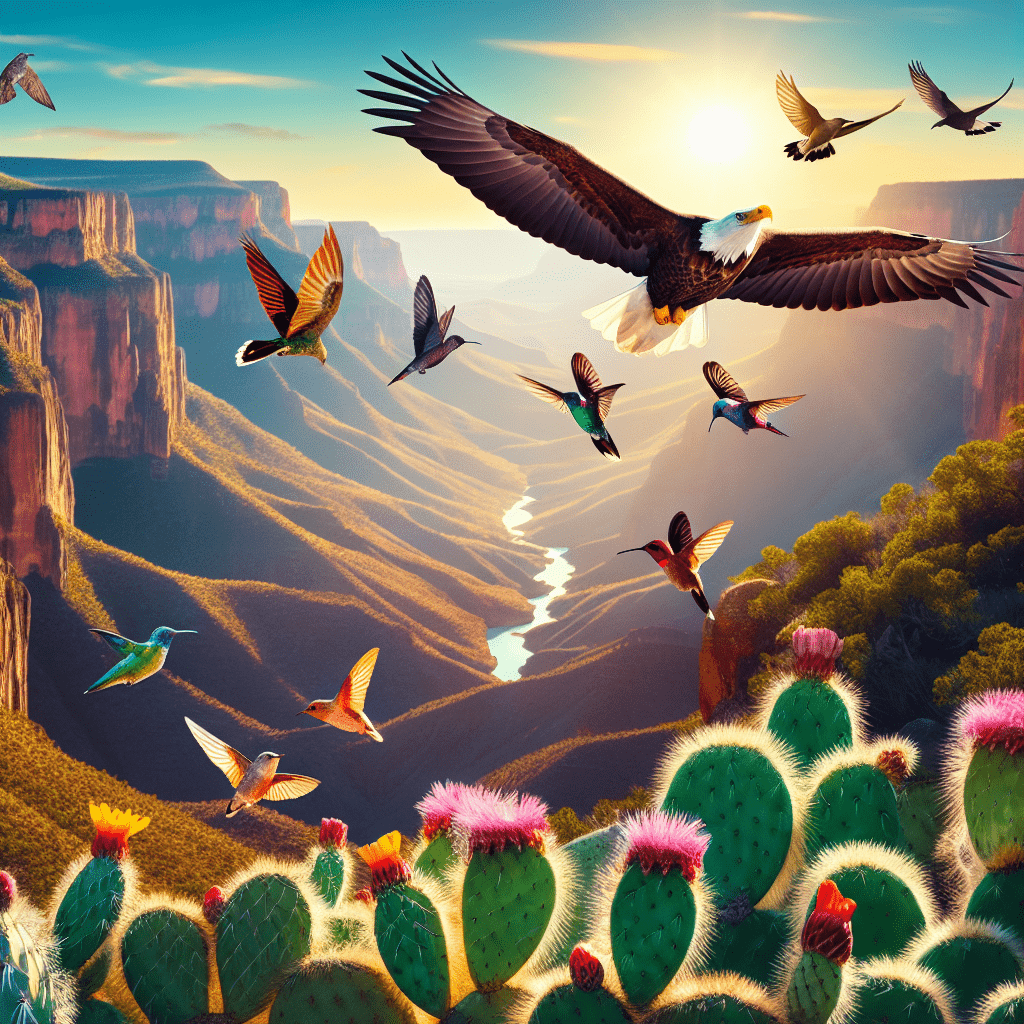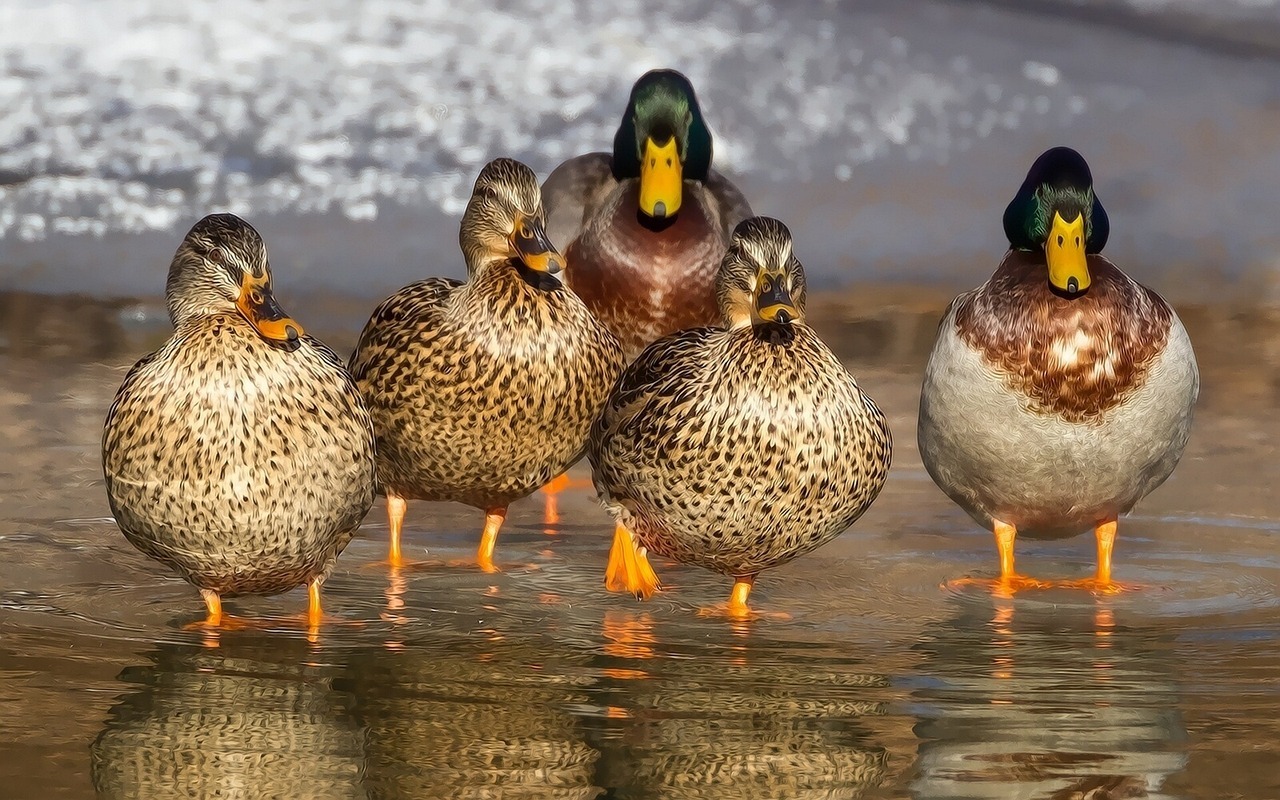
Come explore the natural wonders of Big Bend National Park and immerse yourself in the captivating world of bird-watching. With its diverse ecosystem and vast landscapes, Big Bend offers an abundance of opportunities to observe and marvel at feathered creatures of all shapes and sizes. From colorful warblers to majestic raptors, the park provides a haven for both casual observers and avid bird enthusiasts alike. So pack your binoculars, grab a field guide, and join us on an unforgettable avian adventure in the stunning wilderness of Big Bend National Park.
Bird Species in Big Bend National Park
Big Bend National Park is a haven for bird-watchers, boasting a diverse array of bird species that call the park home. From common bird species to rare and migratory species, there is always something exciting to spot in the park’s rich and varied habitats.
Common Bird Species
The park is home to a number of common bird species that can be spotted year-round. Visitors to Big Bend National Park can expect to encounter birds such as the Northern Cardinal, Black-chinned Hummingbird, and the Vermilion Flycatcher. These beautiful creatures can often be seen darting among the trees and shrubs, providing a delightful experience for bird enthusiasts.
Rare Bird Species
For those seeking a more unique bird-watching experience, Big Bend National Park offers the opportunity to spot rare bird species. Some of the rare species that have been documented in the park include the Montezuma Quail, Lucifer Hummingbird, and the Colima Warbler. Spotting these elusive birds requires patience and keen observation skills, but the reward is a sighting that few others have had the privilege to witness.
Migratory Bird Species
Big Bend National Park is an important stopover for countless migratory bird species, making it a prime location for bird-watchers during certain times of the year. Birds such as the Painted Bunting, Swainson’s Hawk, and the Summer Tanager can be seen passing through the park during their annual migrations. These remarkable journeys of these birds add an element of excitement and wonder to any bird-watching adventure in Big Bend National Park.
Bird Habitats in Big Bend National Park
The diverse habitats found within Big Bend National Park provide a wide range of environments for bird species to thrive. From the mountains to the rivers and deserts, each habitat offers a unique opportunity to observe different species in their natural habitats.
Mountain Habitats
The mountainous regions of Big Bend National Park provide a home for a variety of bird species that are adapted to the higher elevations. Visitors can expect to encounter birds such as the Mexican Jay, Golden Eagle, and the Colima Warbler in these habitats. The cool, forested areas of the mountains offer a refreshing change of scenery and a chance to observe birds that may not be found in other parts of the park.
River Habitats
The rivers that wind through Big Bend National Park are an important habitat for many bird species. Along the banks of the Rio Grande, visitors can observe birds such as the Green Kingfisher, Ringed Kingfisher, and the Yellow Warbler. These birds rely on the abundant water sources for their survival and can often be seen perched near the water’s edge, hunting for food or building nests.
Desert Habitats
One of the defining features of Big Bend National Park is its vast desert landscapes. Despite the harsh conditions, many bird species have adapted to thrive in these arid habitats. Birds such as the Greater Roadrunner, Cactus Wren, and the Curve-billed Thrasher are commonly found in the desert regions of the park. Their ability to survive in such challenging environments is a testament to their resilience.
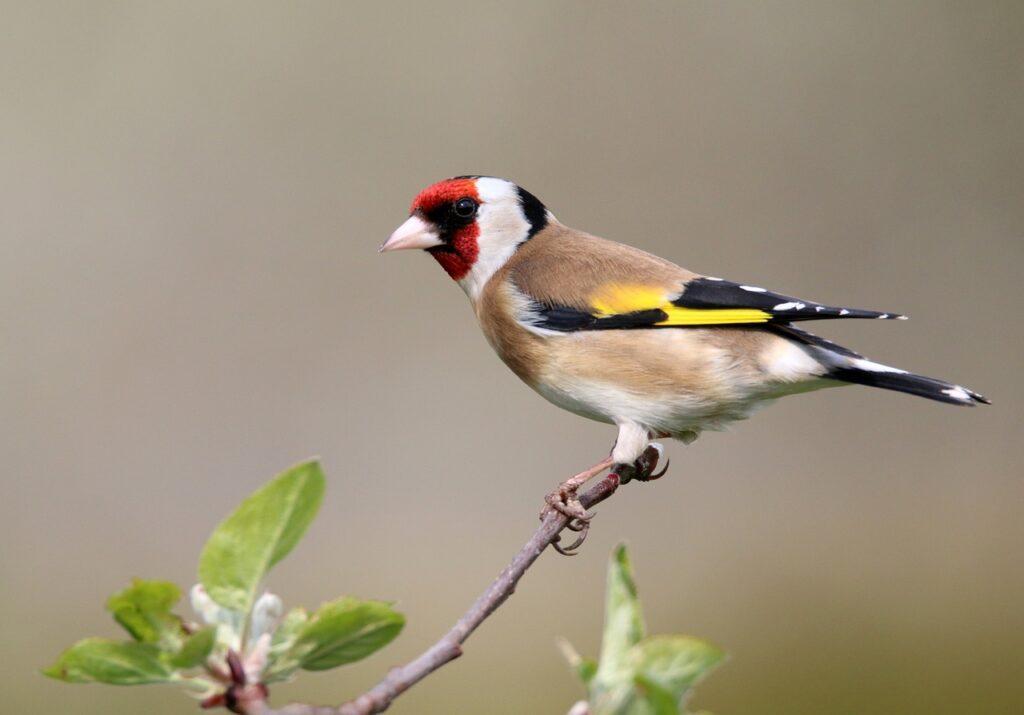
Best Time for Bird-watching
While bird-watching can be enjoyed year-round in Big Bend National Park, there are certain times of the year that offer optimal conditions for spotting a variety of species.
Spring
Spring is an exciting time for bird-watchers in Big Bend National Park. As the weather warms up and the vegetation begins to bloom, migratory bird species return to the park in large numbers. The air is filled with the songs and calls of numerous species, making it an ideal time for bird enthusiasts to visit. The months of March through May are particularly rewarding for bird-watching during the spring season.
Fall
Just like spring, fall is another excellent time to visit Big Bend National Park for bird-watching. Many migratory bird species pass through the park during their southward journey, providing ample opportunities for sightings. The months of September through November are prime bird-watching seasons, offering a chance to witness the stunning colors and behaviors of these migratory species.
Winter
Winter in Big Bend National Park is a quieter time for bird-watching compared to spring and fall. However, this season still offers the chance to spot certain bird species that prefer cooler temperatures. Birds such as the Pyrrhuloxia, Spotted Towhee, and the White-crowned Sparrow are commonly seen during the winter months. The park’s peacefulness during this time allows bird enthusiasts to enjoy a more serene and tranquil bird-watching experience.
Top Bird-watching Locations in Big Bend National Park
Big Bend National Park is vast, covering over 800,000 acres, and offers numerous locations that are particularly suited for bird-watching. Here are some of the top locations within the park where bird enthusiasts can have the best chances of spotting a variety of species.
Chisos Basin
Located in the heart of the park, the Chisos Basin is a popular spot for bird-watching. The basin’s higher elevation provides a unique habitat for birds such as the Mexican Jay, Colima Warbler, and the Black-chinned Sparrow. Trails in the area, such as the Window View Trail, offer excellent opportunities to observe these bird species in their natural habitat.
Santa Elena Canyon
Situated along the Rio Grande, Santa Elena Canyon is not only a breathtaking natural wonder but also a haven for bird species. The towering cliffs and lush vegetation attract birds such as the Green Kingfisher, Golden-fronted Woodpecker, and the Vermilion Flycatcher. A leisurely hike along the canyon provides bird enthusiasts with stunning views and ample bird-watching opportunities.
Rio Grande Village
The Rio Grande Village is an excellent location for bird-watching, thanks to its proximity to water sources and diverse habitats. Ornithologists and bird enthusiasts can spot species such as the Ringed Kingfisher, Yellow-crowned Night-Heron, and the Common Black Hawk in this area. The campground and nature trails in Rio Grande Village offer convenient vantage points for observing these bird species.

Guided Bird-watching Tours
For those looking for a more structured and informative bird-watching experience, Big Bend National Park offers a range of guided tours and programs.
Local Birding Groups
Several local birding groups operate within or near the park, providing guided bird-watching tours led by experienced birders. These groups offer valuable insights into the park’s bird species, behavior, and habitats. Visitors have the opportunity to join a group and benefit from the knowledge and expertise of seasoned bird-watchers.
National Park Service Programs
The National Park Service also offers educational programs and guided tours that focus on bird-watching in Big Bend National Park. These programs are designed to provide visitors with a deeper understanding of the park’s bird species, their importance within the ecosystem, and conservation efforts. Joining one of these programs allows bird enthusiasts to enhance their bird-watching skills while contributing to the park’s preservation.
Bird-watching Equipment
Having the right equipment is essential for a successful and enjoyable bird-watching experience in Big Bend National Park. Here are a few key items that every bird-watcher should consider bringing along.
Binoculars
Binoculars are an essential tool for bird-watching, allowing bird enthusiasts to observe birds up close and in detail. A good pair of binoculars with decent magnification and clarity can make all the difference in spotting and identifying bird species from a distance.
Field Guides
Field guides are invaluable resources that provide information and illustrations of various bird species. These guides assist bird-watchers in identifying the birds they encounter, allowing for a more enriching and educational experience. There are many field guides available, so it’s recommended to choose one specific to the region and bird species found in Big Bend National Park.
Camera
A camera is a useful tool for capturing memorable moments and documenting bird species during a bird-watching excursion. Whether it’s a high-end DSLR or a smartphone camera, having a way to capture images of the birds you encounter allows for later identification and sharing with fellow bird enthusiasts.
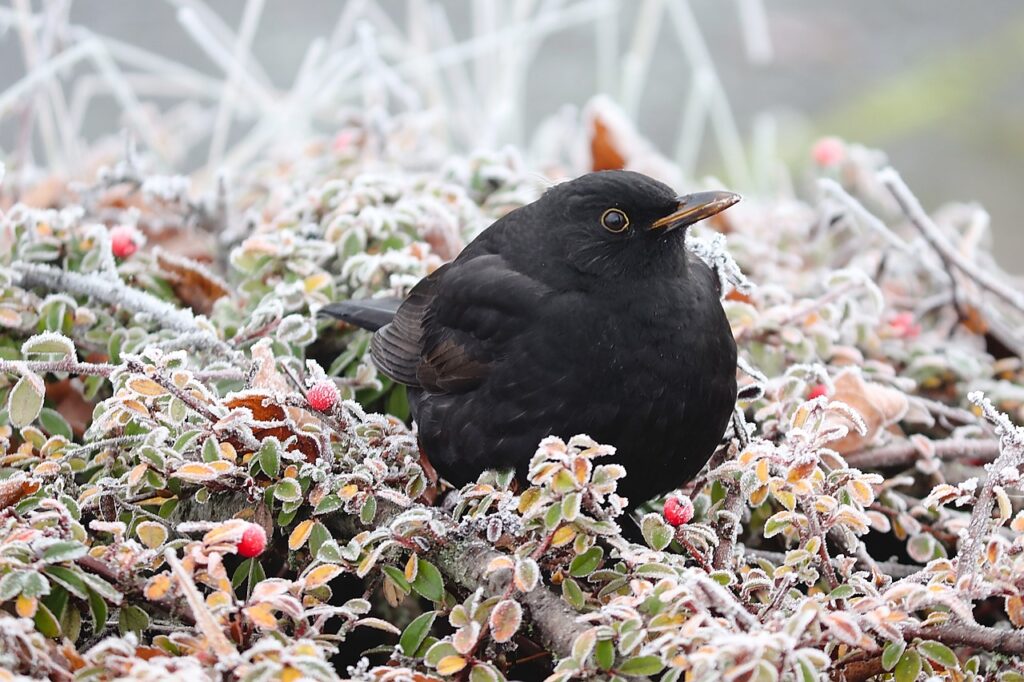
Bird-watching Etiquette
Respecting bird habitats and practicing proper bird-watching etiquette is crucial to ensure the well-being of the birds and to maintain a positive experience for all visitors.
Respecting Bird Habitats
When bird-watching in Big Bend National Park, it is important to respect and protect the habitats of the birds. Avoid trampling on vegetation or disturbing nesting areas. Stick to designated trails and observation points to minimize your impact on the environment.
Maintaining Distance
While it may be tempting to get as close as possible to get a better view of a bird, it is essential to maintain a respectful distance. Getting too close can cause unnecessary stress to the bird and may disturb their natural behaviors. Use binoculars or a camera with zoom capabilities to observe the birds without intruding on their space.
No Disturbance or Harassment
Bird-watching is about observation and appreciation, not harassing or disturbing the birds. Do not make loud noises, attempt to touch or handle the birds, or disturb their nests or young. Take care to maintain a quiet and peaceful presence to ensure the birds can go about their activities undisturbed.
Bird-watching Tips
To enhance your bird-watching experience in Big Bend National Park, here are some tips to keep in mind.
Research and Study Bird Species
Familiarize yourself with the bird species you are likely to encounter in the park. Study their appearances, behaviors, and calls beforehand, so you can easily identify them in the field. Knowledge of specific bird species will greatly enhance your overall bird-watching experience.
Pay Attention to Behavior and Calls
Observing the behavior of birds and listening to their calls can provide valuable insights into their species and activities. Pay attention to feeding habits, nesting behaviors, and any unique behaviors that can help with identification. Familiarize yourself with the calls of different bird species to recognize their presence even if they are not immediately visible.
Use Optimal Lighting
Birds can often blend into their surroundings, making it challenging to spot them. Utilizing optimal lighting conditions can help enhance visibility. Early mornings and late afternoons tend to provide softer and more flattering lighting. Position yourself so that the sunlight is behind you, illuminating the birds and making it easier to see their distinctive features.
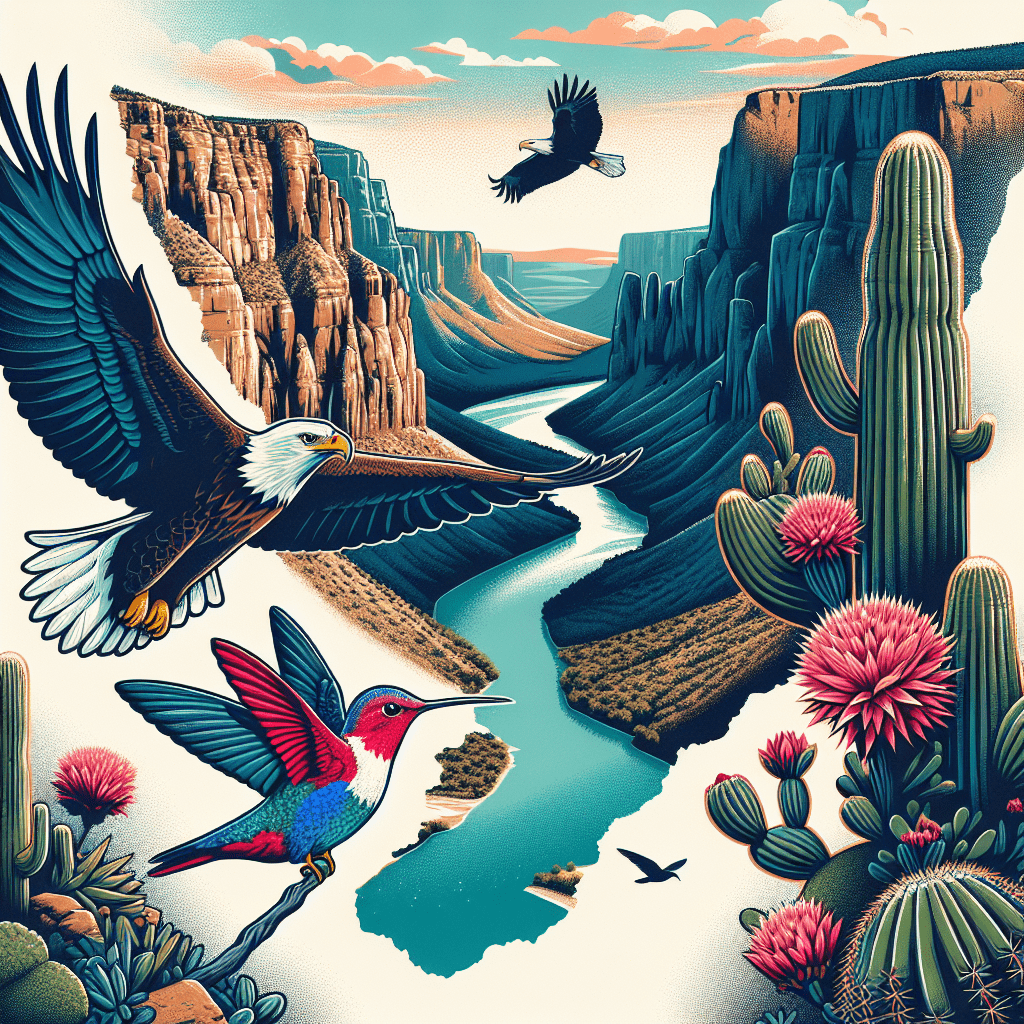
Additional Wildlife Viewing Opportunities
While bird-watching may be the primary focus for many visitors to Big Bend National Park, there are also abundant opportunities for observing other wildlife.
Mammals
The park is home to a variety of mammal species, including deer, javelinas, coyotes, and bobcats. Keeping a watchful eye during hikes or while exploring different habitats can often lead to exciting mammal encounters. Wildlife sightings add an extra layer of excitement and diversity to any nature observation experience.
Reptiles
Big Bend National Park is known for its reptile diversity, including various snake, lizard, and turtle species. Observing these fascinating creatures in their natural habitats can be both educational and thrilling. Exercise caution when encountering reptiles and respect their space.
Amphibians
Certain seasons and habitats in Big Bend National Park are ideal for observing amphibians. During the rainy summer months, visitors can witness amphibians such as toads, frogs, and salamanders as they emerge and thrive in the temporary ponds and wetlands. Take the opportunity to explore these unique ecosystems and observe the fascinating life cycles of amphibians.
Conservation Efforts and Citizen Science
Big Bend National Park is committed to the conservation and preservation of its diverse and delicate ecosystems. Visitors can contribute to these efforts through participation in various citizen science initiatives.
Bird Population Monitoring
Several ongoing bird population monitoring programs operate within the park, collecting valuable data on species abundance, migratory patterns, and overall bird health. By reporting bird sightings and participating in monitoring efforts, visitors can directly contribute to the scientific understanding of bird populations and help inform conservation strategies.
eBird Observations
eBird is a popular and widely used online platform that allows birders to record and share their bird observations. By creating an eBird account and submitting your sightings, you contribute to a global database of bird species and their distributions. The data collected through eBird aids in research, conservation, and provides valuable insights into bird populations worldwide.
Participating in Research Projects
From time to time, Big Bend National Park and various research organizations may offer opportunities for visitors to participate in specific research projects. These projects can range from bird banding and tracking studies to habitat assessments and behavioral observations. By taking part, visitors actively contribute to the scientific understanding and conservation efforts within the park.
In conclusion, Big Bend National Park offers incredible bird-watching opportunities for enthusiasts of all levels. The park’s rich bird diversity, diverse habitats, and various guided programs ensure a fulfilling and educational experience. By adhering to proper bird-watching etiquette, respecting habitats, and contributing to conservation efforts, visitors can help protect the park’s bird populations for future generations to enjoy. So grab your binoculars, field guide, and camera, and embark on a memorable bird-watching adventure in Big Bend National Park!
